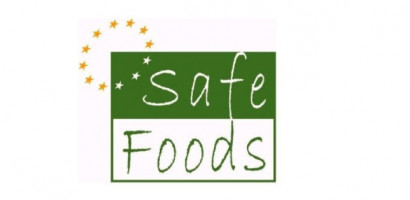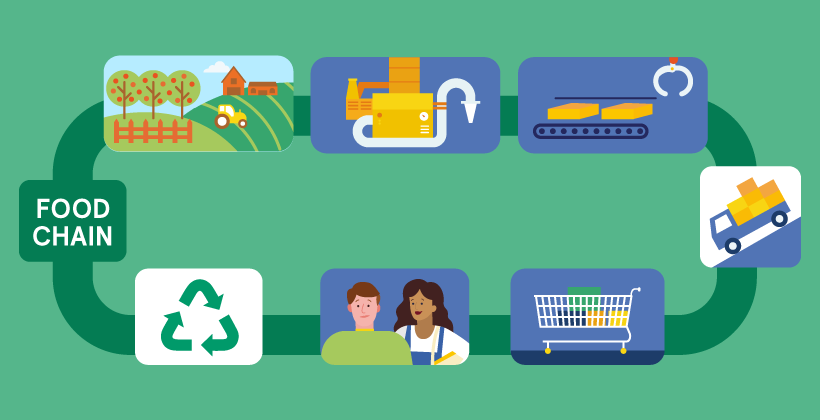EUFIC Forum n°1: Quo vadis food risk communication?
Last Updated : 05 August 2004BACKGROUND
The field of risk communication is going through a period of change. The area, having evolved from studies of public perceptions associated with nuclear power plants, noxious chemical facilities and crisis management issues Food issues, be they associated with genetically modified organisms, acrylamide and whether fried foods are indeed safe to eat, or food safety issues in general, are key topics of discussion at international risk communication meetings at the present time and are gaining prominence in media and policy debates.
However, most of the academic meetings and the papers resulting from them focus on how lessons learned in the chemical and nuclear sectors can be transferred to the food area. There is little general discussion of the real requirements for food risk communication research, in terms of the take home lessons from past food risk communication topics and how food safety issues vary from culture to culture. The aim of the academic workshop was to address this issue.
SETTING THE CONTEXT
At the Cork meeting nine academics (see annex for list of participants) gave seven presentations focusing on food risk communication issues, ranging from the recent farmed salmon and BSE scares, to the European GMO debate and the role of transparency and public participation in the food regulatory process. From the outset the academic group agreed that food is unique. Food is required for life and survival and hence we as humans cannot escape it, or as Unni Kjaernes and colleagues have argued...food-materialistically as well as symbolically--becomes part of the consumer's body on a daily basis.
Clearly, conceptual ideas should not simply be borrowed from the nuclear and chemical sectors. It is essential to take these unique differences into account in order to develop separate food risk communication strategies. This has not been the case to date. As a literature review over the past two decades of food risk communication prepared for the workshop showed, most of the studies in the area were based on theoretical insights from the energy and environmental fields.
The academics also noted that there is a long history of food ethics research which has to date not been adequately considered by risk communication researchers.
For the Greeks 'virtuous' food consumption distinguished civilised people from barbarians and animals. Virtuous consumption entailed temperance, something that contemporary societies may need to rediscover in face of the obesity crisis. In ancient times food ethics were focussed largely on consumption; in contemporary times food ethics include not only consumption but also preparation and, perhaps more importantly, issues of production.
In this regard ethics include industrial versus 'natural' production, conventional versus GM foods, conventional versus organic foods, local foods versus those sourced from far afield (food miles), exploiting or being kind to animals. Stances on these dichotomies resonate with different sections of the public as we see a proliferation of values emerging in contemporary Western societies.
Science is no longer at the top of the hierarchy of forms of knowledge but competes with other claims to the 'truth', and other such claims to the truth include religious, political, post-materialist and emancipatory value orientations. Related to this proliferation of values is the emerging gap between risk, in the sense of sound science, and what the public perceive as food hazards.
Research on public perceptions of GM foods highlighted a number of dangers beyond toxicity and allergenicity, including moral risks (is it right to tamper with nature?), democratic risks (who is regulating GM and is it possible to regulate such a fast moving technology?) and cultural risks (should science trump all other values?). All this comes together to show that food is a special case. Beyond calories as a mere fuel, food is a fundamental part of culture, and a cultural form that is taking on greater importance in a number of European societies. As such, food risk communication is a pressing concern and poses unique challenges.
DISCUSSION POINTS
The academic workshop led to a number of discussion points including trust, transparency and participation. These discussion points are summarised in chronological order beginning with trust. We start with trust, as the literature on this topic led to interest in developing both transparency and participatory communication tools.
TRUST
The question that the workshop considered to begin with was whether present day regulators were trustworthy or not. Findings from the academic literature indicated that following a number of scandals, ranging from the mad cow crisis to dioxin in Belgian chicken feed, levels of public trust in policy makers and regulators have fallen throughout Europe in the 1980s and 1990s. In response, the European food regulators put forward a number of strategies, ranging from separating risk assessment from risk management, to advocating greater transparency in the policy-making process and greater public participation. These modern regulatory tools were analysed and discussed at some length at the workshop, in particular with regard to whether they increased public trust or not.
Starting off the discussion, Unni Kjaernes of the National Institute for Consumer Research in Norway noted that levels of public trust toward European food regulators varied dramatically between countries. The Nordics and the British trusted their regulators, for example, while the southern Europeans did not. Her findings, confirming earlier research results, also indicated that on the whole the publics in the participating nations trusted consumer organisations, experts (e.g. academics) and authorities more than supermarkets, industry or politicians.
Possible explanations for these varying trust levels ranged from some countries being largely exempt from food scandals (the Nordic nations), to some where a wide array of participatory and transparency risk communication tools have been introduced leading to greater public trust (for example the Food Standards Agency in the UK), to those where the public have always mistrusted authority (south European nations). This introductory discussion led directly to an "on-and-off" discussion throughout the duration of the workshop as to whether transparency and participation should be promoted by regulatory authorities or not.
On a methodological note, it was suggested that research on trust needs to be more carefully considered. To ask questions about trust in situations in which people do not generally perceive a risk is to call into question a 'taken for granted' of life. Many people may not have thought about trust in relation to food purchasing and so to ask a question such as 'do you trust X' may suggest that there are good reasons to withhold trust, or to respond with stereotypical answers. For example, when asked if people trust the media, only a small percentage agree. Yet, when asked what are their main sources of information, a majority cite the media. Other forms of questioning, such as, 'Is actor X doing a good job for society or not?' yield very different response profiles, as shown in the Eurobarometer surveys on biotechnology.
TRANSPARENCY
As the literature suggests, there are two views on transparency. On the one hand some academics and regulators note that transparency should be encouraged at all times. Sir John Krebs recently argued, for example:
"Consumers are entitled to information that could affect their health and transparency helps them make informed choices."
Likewise, as was reported in the Philips inquiry with regard to the UK BSE scandal, trust can only be earned via openness (transparency). In effect: a) to establish credibility it is necessary to generate trust; b) Trust can only be generated by openness; c) Openness requires a recognition of uncertainty where it exists."
The academics were split regarding this issue. Lynn Frewer, of Wageningen University, reported that her research indicated that transparency may not necessarily increase public trust, but lack of transparency will lead to increased public distrust. She also noted that in an ideal world transparency should be combined with proactive communication regarding the various factors inherent in risk assessment and risk management including uncertainties and how these are handled.
The transparency process is not problem-free. Firstly it both directly and indirectly encourages the public to make its own decisions about what food it should eat, what car it should buy, what policy-makers it should believe in, based either directly on information available via the web, or via the lens of the media, as opposed to through the regulators themselves. This in turn means that the public increasingly has to make risk management decisions based on a number of criteria, many of them being unscientific, such as stakeholders' ability to speak, or an individual's charisma or looks. In such cases, as Ortwin Renn noted, transparency can be misunderstood, that is to say journalists can report risk stories incorrectly because there is too much transparency and too little proper analysis. This occurred with regard to the UK birth control pill scare, in which journalists amplified the practically non-existent risks, leading large numbers of the general public to stop taking the pill, which in turn led to thousands of unwanted babies and abortions.
Other academics have noted that increased transparency in the policy making process also leads to the growth of scientific pluralism. As scientists start airing their grievances in public rather than behind closed doors as in the past, the likelihood of one group of scientists being pitted against another in the media increases exponentially. There are a number of examples of this in food risk communication literature, including the April 2002 Swedish acrylamide alarm. That said, even whilst acknowledging the problems connected with transparency, it is not, in the present day, realistic to return to the consensual style of regulation, as Ortwin Renn noted. This would be roundly rejected, both by the various non-governmental organisations and the majority of the public.
And what of the relationship between transparency and accountability? Does the public want transparency, or does it really desire some accountability in respect of decisions regarding risk management and the attribution of responsibility when things go wrong? While accountability generally implies a degree of transparency, the reverse is not necessarily the case.
PUBLIC AND STAKEHOLDER PARTICIPATION
Increased transparency results in the need for additional communication and stakeholder involvement. As a number of academics noted, for transparency to be a successful risk communication tool, then regulators need to realise that it is simply not enough to be open and honest. It is also necessary for policy makers to ensure that the public and stakeholders have an ability to participate should they wish to do so. Or in other words, the policy makers are responsible for ensuring deliberative policymaking. There are a number of issues associated with public and stakeholder participation however.
Firstly, there is the so-called self-selection process. Most people do not want to participate in policy making. They prefer to go home after work, put their feet up and have a glass with their loved ones rather than participate in a citizen panel. There are many examples of this. Within the food sector one classic example is the £500,000 UK Government's GM Nation debate that took place in 2003. The exercise had a number of rather impressive statistics: 20,000 people attended 675 meetings across Britain; the public sent in 1,200 letters and emails, The website received 2.9 million hits in just 6 weeks; 70,000 feedback forms were downloaded and 36,557 were returned. The summary report concluded that the public mood on GM "ranged from caution and doubt, through suspicion and scepticism, to hostility and rejection". The main problem with this £500k exercise, however, was the self-selected nature of it. People were asked to write in comments. Members of the "silent majority" did not participate.
These findings are virtually the opposite of what a research team from Cardiff University and the University of East Anglia reported in February 2004. This research team released a MORI opinion poll that found that 39 per cent were neither for nor against GM food, 36 per cent were opposed and 13 per cent in favour. How can we encourage the silent majority to participate even when they do not want to? This is an issue that needs to be addressed.
Some academics argued, however, that this was a rather pessimistic outlook and that in fact public participation techniques could be significantly improved. In addition, even if the self-selection process may skew the sample, outcomes can still be positive.
While there is a head of steam behind increased public participation, what this entails in practice and what it is intended to achieve are poorly defined and poorly understood. It may well be a panacea to the problems of the successful governance of science and technology, including foods, but without further exploration and development as to the desired outcomes and unintended consequences, the jury is still out.
RISK CLASSIFICATION
Aside from public participation, transparency and trust, Ortwin Renn among others identified a regulatory need for a risk classification system (see appendix 2 for a suggested model). Regulators and other stakeholders have used for a long time advanced computer models to help them better predict potential crises and controversies as well as a traffic light model to help them to decide whether to take action or not (e.g. red always a crisis, yellow sometimes a crisis, and green pretty much clear). Indeed, some regulatory agencies have developed entire theoretical handbooks on this topic, such as that produced by the UK Health and Safety Executive.
Ortwin Renn's model is different from the ones mentioned above, as it takes the scientific characteristics of risks, including complexity, uncertainty and ambiguity, into account, and develops a risk escalator diagram based on these characteristics. This diagram then breaks down risks in four distinct categories, simple, complex, uncertain and ambiguous. Based on how the risk is classified, it then puts forward a number of suggested regulatory tools that can best be used to cope with each risk characteristic. For example, risks that are seen as complex will need scientific risk assessment. Risks that are viewed as ambiguous however, require risk trade-off analysis as well as deliberation. This model is presently being tested by the German Risk Commission with positive feedback to date.
Media guidelines
One issue that was discussed at some length was whether academics should be involved in developing media guidelines and whether in fact the media would actually welcome such guidelines. The academics concluded that media guidelines are useful, but for them to work, the journalists/ newspaper or television editors must initiate the process. That is to say that they need to see a need for such guidelines and in so doing take ownership of the process. Guidelines produced by academics will be not be useful as the journalists will, to a great extent, be unwilling to use them.
SOME SUGGESTIONS
The academic workshop came up with a number of more practical suggestions which we would welcome comments upon:
- Regulators have acknowledged that there is presently a need for a risk classification system. Ortwin Renn's risk escalator may be such a model that needs to be further developed and tested in the context of food risks;
- Transparency is not the be all and end all of modern day risk communication. Policy makers are, however, unable to go back to the old model of consensual decision making and it is therefore necessary to resolve some of the problems facing the widespread use of transparency in the policy aking process. In this regard academics should be given an opportunity to work with regulators to a greater degree;
- A number of past food scares have been caused by policy makers not doing their homework. It is vital that policy makers prepare their communications strategy properly;
- There is a greater need for policy makers to help the public understand scientific and risk terminologies. One of the main reasons why the use of transparency as a risk communication tool has resulted in public confusion is because both scientists and the regulators have spoken in a language that is not understood by the general public. One way to address this is to develop media and public communication courses for scientists and stakeholders;
- Trust is widely regarded as the key component of risk communication. Some nations, such as the UK, have been able to improve trust in their food regulators. What is now needed is to further establish the cultural differences of how publics view their regulators in different nations and develop analytical tools to better explain these differences. This will enable regulators in each of the individual countries to develop appropriate risk communication strategies that could help them to win back the public's trust.
RESEARCH NEEDS
A number of research needs were also identified:
- There is a need to address the teething problems that are associated with the increasing use of transparency as a risk communication tool;
- How can we develop better public participatory tools?
- If, as many believe, it is thought desirable to educate the public on issues of risk, how can scientists, regulators and risk communicators also be educated to understand how risk plays out in the public domain?
- There is a need to address the institutional challenges associated with considering and combining quests for transparency and communication, accountability, participation as well as independence. How do these efforts go together and what are the forces that may pull in other directions? How do these efforts vary in different social and institutional contexts
- In the evolving area of food risk communication, how does one take into account other food related issues such as nutrition, ethics and quality?
Finally, we recommend the establishment of a platform of scientists to take forward the issue of food risk communication. This is a vital issue for the health of contemporary societies yet it is an area that is both under-researched and poorly understood. An initiative on food risks and food risk communication would be a timely development.
Prof. Ragnar Löfstedt (King's College London),
Prof. George Gaskell (London School of Economics)
Prof. Ortwin Renn (University of Stuttgart)



